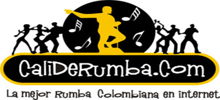Rumba is a vibrant and expressive musical genre that originated in Cuba during the late 19th and early 20th centuries. It is deeply rooted in African rhythms and Spanish influences, reflecting the rich cultural fusion that characterizes Cuban music. The term "rumba" itself comes from the Yoruba word "rumbó," which means to make noise or to dance, highlighting its dynamic and energetic nature.
Rumba encompasses several sub-styles, each with its unique characteristics and regional variations. The most well-known are the Guaguancó, Columbia, Yambú, and Danzón. Guaguancó is perhaps the most popular and is known for its sensual and provocative dance movements, where the dancer's hips mimic the act of courtship. It features a complex interplay between the lead singer (cantante), chorus (coros), and percussionists, including conga drums (tumbadoras) and claves.
Columbia, on the other hand, is more structured and less improvisational than Guaguancó. It often includes lyrics that tell stories or express social commentary, accompanied by a steady rhythm provided by the congas and bongós. Yambú is considered the oldest form of rumba and is characterized by its slower tempo and more subdued dance movements. It focuses on intricate percussion patterns and vocal harmonies.
Danzón, while not strictly a type of rumba, has significantly influenced the genre. Originating in the late 19th century, it combines elements of European ballroom dances with Afro-Cuban rhythms. Danzón's elegant and formal dance steps contrast with the more improvisational and passionate styles of Guaguancó and Columbia.
The instruments used in rumba are diverse and include a variety of percussion instruments such as congas, bongós, timbales, and claves. The conga drums provide the rhythmic foundation, while the bongós add higher-pitched accents. Timbales offer a more melodic element, and claves set the tempo with their distinctive "click-clack" sound.
Vocals in rumba are often call-and-response, with a lead singer engaging in dialogue with a chorus. This interaction creates a lively and interactive atmosphere, encouraging audience participation. The lyrics can range from love songs to social critiques, reflecting the everyday experiences of the Cuban people.
Rumba has had a profound impact on various musical genres around the world, influencing everything from jazz and salsa to Latin pop. Its infectious rhythms and passionate expression have captivated audiences globally, making it a staple in dance halls, clubs, and festivals. In Cuba, rumba is not just music; it is a way of life, embodying the spirit of celebration, community, and cultural pride.
Over the years, rumba has evolved and adapted, incorporating new elements while retaining its traditional essence. Contemporary artists continue to innovate within the genre, blending modern sounds with classic rumba rhythms to create fresh and exciting music that resonates with both old and new generations. Whether performed in a small neighborhood gathering or on a grand stage, rumba's energy and authenticity remain unmatched, making it a timeless and beloved musical form.
 448
448
 1
Colombia, Cali Rumba
1
Colombia, Cali Rumba Rumbera EstereoRumbera Estereo
Rumbera EstereoRumbera Estereo 185
Colombia, Barranquilla Rumba
185
Colombia, Barranquilla Rumba
